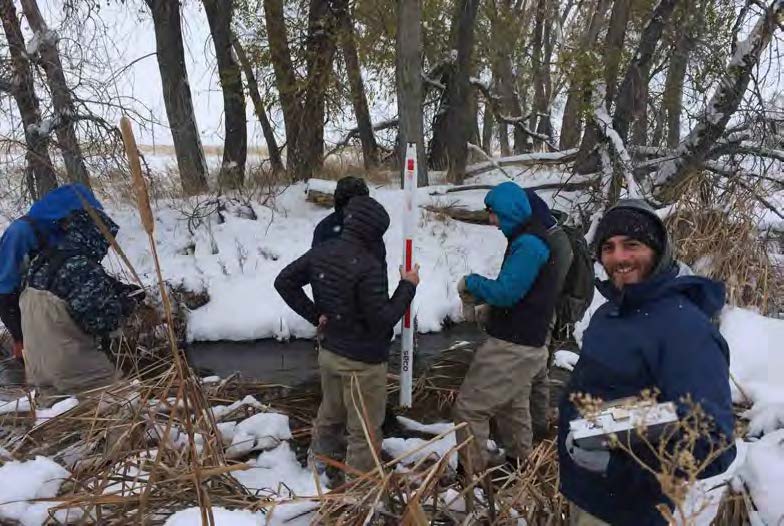Flow duration tool providing foundation for change in federal oversight of streams

A SCCWRP-developed approach for determining the flow duration patterns of streams in the U.S. Southwest is serving as the technical centerpiece in an ongoing effort to change how the federal government provides oversight of streams nationwide.
The stream flow duration tool, which can rapidly distinguish among intermittent, ephemeral and perennial streams, is being used by the U.S. Environmental Protection Agency to help determine which streams the government has jurisdiction to regulate under the federal Clean Water Act.
Under a rules change finalized in January by the Trump administration, entities that discharge into ephemeral streams will no longer be required to obtain discharge permits from the federal government.
Ephemeral streams, which are streams that only experience brief surface flows after rain events, have traditionally been difficult to distinguish from other stream types, including intermittent streams that experience sustained seasonal flows from snow melt and groundwater. Federal agencies will continue to provide oversight of intermittent streams.
Traditionally, distinguishing ephemeral streams from intermittent streams has required obtaining long-term records from gauges or rigorous hydrologic models – neither of which exists for most streams.
The EPA has been working for decades to improve the ability of regulatory agencies to distinguish among different stream types. SCCWRP’s flow duration tool, which has been in development for the past two years, has the potential to help stream managers rapidly develop clarity around complex jurisdictional issues nationwide.
The flow duration tool assesses stream flow duration using easily observed field indicators, including presence of wetland vegetation and specific types of aquatic insects. SCCWRP’s tool combines elements of regional tools originally developed for use in the Pacific Northwest and New Mexico.
SCCWRP and its partners have been working to calibrate and test the tool for use in multiple U.S. regions, including the Arid Southwest, Western Mountains and Great Plains.
Along the way, SCCWRP has been leading local watershed managers in collaborative case studies, and proactively identifying opportunities to solve implementation challenges.
SCCWRP’s managerially relevant implementation approach has resonated with the EPA, which has accelerated timelines for the tool’s rollout in other regions of the U.S., including Alaska, Hawaii and overseas territories
It remains unclear if or how California will be impacted by the new federal rule. Under the state’s Porter-Cologne Water Quality Control Act of 1969, California does not distinguish ephemeral streams from streams with alternate flow regimes.
SCCWRP’s work to date is chronicled in a pair of technical reports – a literature review and a newly published pilot study on flow duration indicators in the Southwest.
For more information, contact Dr. Raphael Mazor.
More news related to: Ecohydrology, Top News